xmascrotch600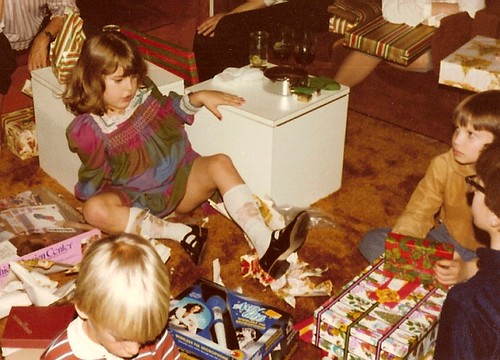
Image by lobstar28
Cool Toys Pic of the day - Maps & Media, Sports & Storms, Crime & Even Books (Stamen)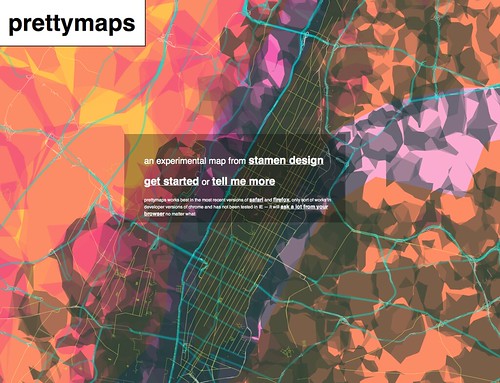
Image by rosefirerising
Stamen:
stamen.com/
Every now and again I stumble over Stamen, and my shiny-shiny gene
goes into gear. Stamen is a design and technology firm in San
Francisco that over the past few years has worked on a number of
inspiring projects blending disparate fields and blurring their
boundaries. As they put it, "Experimental and client work have a way
of feeding into one another: the crossover process enriches both.
Stamen doesn't believe in a clear separation between ideas and
technology, or between client work and research work."
One foundational element that seems common to much of their work is
data visualization. A lot of their dataviz work connects to maps (the
original dataviz!). A couple of their recent map projects include
PolyMaps and PrettyMaps. Older projects/clients with mapping
components include Walking Papers (navigation), Crimespotting, Hope
for Haiti, Cloudmade Maps, Hurricane Maps, Cabspotting, TravelTime,
and more. You can see the range immediately, just from titles!
PolyMaps:
polymaps.org/
"Polymaps is a free JavaScript library for making dynamic, interactive
maps in modern web browsers." PolyMaps is available for download in
both Zip and GIT file formats. It can incorporate data from
OpenStreetMap, CloudMade, Bing, and can be formatted with CSS.
PrettyMaps:
prettymaps.stamen.com/
"It is an interactive map composed of multiple freely available,
community-generated data sources:
- All the Flickr shapefiles rendered as a semi-transparent white
ground on top of which all the other layers are displayed.
- Urban areas from Natural Earth both as a standalone layer and
combined with Flickr shapefiles for cities and neighbourhoods.
- Road, highway and path data collected by the OpenStreetMap (OSM) project. ...
prettymaps operates very much at the edge of what the current crop of
web browsers are comfortable doing."
Social media is another theme they've worked with. Eddy is a new
Twitter visualization product from them, with earlier models or
prototypes ranging from the NBA Playoffs on Twitter through various
Flickr and Digg mashups and designs.
Eddy:
eddy.stamen.com/
Eddy is a high-priced big-ticket product Stamen has created to "build
custom Twitter experiences quickly with simple powerful tools." It can
be used for metrics and tracking or for creating realtime interactive
audience experiences for live events. One of the barriers to
integrating Twitter on screen in live events is the possibility of
your hashtag stream being hijacked by spammers. Eddy gives you ways to
filter, control, manage, and block certain keywords in real time. It
doesn't just scroll the stream, but also provides a variety of
visualizations for your onscreen stream in what I am guessing is in a
Digg-like fashion, and thus much more engaging than most of the
Twitter visualization tools available for free.
Stamen has worked in so many areas and applied such a powerful
combination of creativity and content, that I could go on for a very
long time about how and why they inspire me.
You can find more about their work in their Everything section and
their Projects page.
Stamen: Everything:
stamen.com/everything
Stamen: Projects:
stamen.com/projects
I am going to choose just one (and oh, my, that was a hard choice!) to
discuss a little more.
Stamen: Books:
stamen.com/projects/books
AND
book.stamen.com/
Stamen has been pondering the boundaries and design of conventional
books, personal notebooks, and e-books with an eye toward trying to
create a vision for the future that incorporates the best of all of
these. What they say is:
"There’s a fluidity to digital media that’s intensely satisfying: a
sense of almost infinite malleability, multiple versions, code
proliferating across multiple variations, pieces that are different
every time you look at them... but sometimes it can get a bit
overwhelming. While we strive for a kind of engagement with
physicality in the rest of our work, there are limits to digital
media’s ability to leave anything lasting behind. It’s for limits like
this that notebooks are useful—they get filled with the physical
traces of the world instead of manipulation of the world behind the
screen. This work is not so much an antidote for a missing physicality
as it is a complement to the screen, and often a source for more
digital investigations."
What they do is to provide images that show what they imagine might be
possible. Or perhaps the images are actually generated from some
mysterious system they have yet to share with the rest of us. I don't
know. I do know that on our campus there is an initiative to imagine
alternative online textbook formats, and that this collection inspires
me to think very differently about those possibilities.
Print books preserve content in a fixed form. Digital media provide
content in a fluid form. Personal notebooks and printed books provide
space for marginalia, ponderings, explorations, doodling, expansions,
personalization, customization, criticism, carving, snipping,
repurposing, reaction, blending, transforming, connecting and much
much more.
I often sit in meetings next to a woman who seems to need to doodle to
focus and process. Her doodles are delightful visual little graphics,
very artistic and visual. Meanwhile, I am usually taking notes in a
code editor on my computer. Have you ever tried to doodle in an ASCII
editor while taking notes? It's possible, but it sure isn't very easy
and you can't really pay attention to what's going on around you. Not
to mention that there is not much of anything like handwriting in the
digital space. As I look at their images of blended book experiments
and environments, I find myself really longing for a space that allows
me the visual flexibility and personalization of taking notes by hand
on paper with the ability to share, preserve, disseminate, blend,
repurpose from digital environments. Just something to think about.
There is a lot more potential hidden in plain view in their images.
Go, look, ponder, and share YOUR thoughts about what the ideal book
could be like. Next up, adding in 3D visualizations and augmented
reality ...
Cool Toys Pic of the day - Maps & Media, Sports & Storms, Crime & Even Books (Stamen)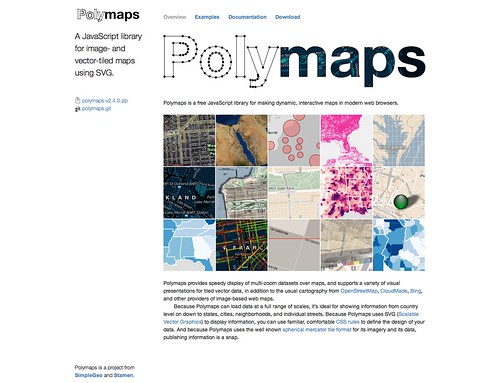
Image by rosefirerising
Stamen:
stamen.com/
Every now and again I stumble over Stamen, and my shiny-shiny gene
goes into gear. Stamen is a design and technology firm in San
Francisco that over the past few years has worked on a number of
inspiring projects blending disparate fields and blurring their
boundaries. As they put it, "Experimental and client work have a way
of feeding into one another: the crossover process enriches both.
Stamen doesn't believe in a clear separation between ideas and
technology, or between client work and research work."
One foundational element that seems common to much of their work is
data visualization. A lot of their dataviz work connects to maps (the
original dataviz!). A couple of their recent map projects include
PolyMaps and PrettyMaps. Older projects/clients with mapping
components include Walking Papers (navigation), Crimespotting, Hope
for Haiti, Cloudmade Maps, Hurricane Maps, Cabspotting, TravelTime,
and more. You can see the range immediately, just from titles!
PolyMaps:
polymaps.org/
"Polymaps is a free JavaScript library for making dynamic, interactive
maps in modern web browsers." PolyMaps is available for download in
both Zip and GIT file formats. It can incorporate data from
OpenStreetMap, CloudMade, Bing, and can be formatted with CSS.
PrettyMaps:
prettymaps.stamen.com/
"It is an interactive map composed of multiple freely available,
community-generated data sources:
- All the Flickr shapefiles rendered as a semi-transparent white
ground on top of which all the other layers are displayed.
- Urban areas from Natural Earth both as a standalone layer and
combined with Flickr shapefiles for cities and neighbourhoods.
- Road, highway and path data collected by the OpenStreetMap (OSM) project. ...
prettymaps operates very much at the edge of what the current crop of
web browsers are comfortable doing."
Social media is another theme they've worked with. Eddy is a new
Twitter visualization product from them, with earlier models or
prototypes ranging from the NBA Playoffs on Twitter through various
Flickr and Digg mashups and designs.
Eddy:
eddy.stamen.com/
Eddy is a high-priced big-ticket product Stamen has created to "build
custom Twitter experiences quickly with simple powerful tools." It can
be used for metrics and tracking or for creating realtime interactive
audience experiences for live events. One of the barriers to
integrating Twitter on screen in live events is the possibility of
your hashtag stream being hijacked by spammers. Eddy gives you ways to
filter, control, manage, and block certain keywords in real time. It
doesn't just scroll the stream, but also provides a variety of
visualizations for your onscreen stream in what I am guessing is in a
Digg-like fashion, and thus much more engaging than most of the
Twitter visualization tools available for free.
Stamen has worked in so many areas and applied such a powerful
combination of creativity and content, that I could go on for a very
long time about how and why they inspire me.
You can find more about their work in their Everything section and
their Projects page.
Stamen: Everything:
stamen.com/everything
Stamen: Projects:
stamen.com/projects
I am going to choose just one (and oh, my, that was a hard choice!) to
discuss a little more.
Stamen: Books:
stamen.com/projects/books
AND
book.stamen.com/
Stamen has been pondering the boundaries and design of conventional
books, personal notebooks, and e-books with an eye toward trying to
create a vision for the future that incorporates the best of all of
these. What they say is:
"There’s a fluidity to digital media that’s intensely satisfying: a
sense of almost infinite malleability, multiple versions, code
proliferating across multiple variations, pieces that are different
every time you look at them... but sometimes it can get a bit
overwhelming. While we strive for a kind of engagement with
physicality in the rest of our work, there are limits to digital
media’s ability to leave anything lasting behind. It’s for limits like
this that notebooks are useful—they get filled with the physical
traces of the world instead of manipulation of the world behind the
screen. This work is not so much an antidote for a missing physicality
as it is a complement to the screen, and often a source for more
digital investigations."
What they do is to provide images that show what they imagine might be
possible. Or perhaps the images are actually generated from some
mysterious system they have yet to share with the rest of us. I don't
know. I do know that on our campus there is an initiative to imagine
alternative online textbook formats, and that this collection inspires
me to think very differently about those possibilities.
Print books preserve content in a fixed form. Digital media provide
content in a fluid form. Personal notebooks and printed books provide
space for marginalia, ponderings, explorations, doodling, expansions,
personalization, customization, criticism, carving, snipping,
repurposing, reaction, blending, transforming, connecting and much
much more.
I often sit in meetings next to a woman who seems to need to doodle to
focus and process. Her doodles are delightful visual little graphics,
very artistic and visual. Meanwhile, I am usually taking notes in a
code editor on my computer. Have you ever tried to doodle in an ASCII
editor while taking notes? It's possible, but it sure isn't very easy
and you can't really pay attention to what's going on around you. Not
to mention that there is not much of anything like handwriting in the
digital space. As I look at their images of blended book experiments
and environments, I find myself really longing for a space that allows
me the visual flexibility and personalization of taking notes by hand
on paper with the ability to share, preserve, disseminate, blend,
repurpose from digital environments. Just something to think about.
There is a lot more potential hidden in plain view in their images.
Go, look, ponder, and share YOUR thoughts about what the ideal book
could be like. Next up, adding in 3D visualizations and augmented
reality ...
Cool Toys Pic of the day - Maps & Media, Sports & Storms, Crime & Even Books (Stamen)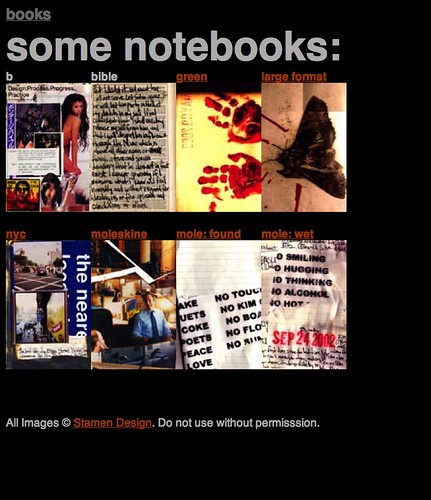
Image by rosefirerising
Stamen:
stamen.com/
Every now and again I stumble over Stamen, and my shiny-shiny gene
goes into gear. Stamen is a design and technology firm in San
Francisco that over the past few years has worked on a number of
inspiring projects blending disparate fields and blurring their
boundaries. As they put it, "Experimental and client work have a way
of feeding into one another: the crossover process enriches both.
Stamen doesn't believe in a clear separation between ideas and
technology, or between client work and research work."
One foundational element that seems common to much of their work is
data visualization. A lot of their dataviz work connects to maps (the
original dataviz!). A couple of their recent map projects include
PolyMaps and PrettyMaps. Older projects/clients with mapping
components include Walking Papers (navigation), Crimespotting, Hope
for Haiti, Cloudmade Maps, Hurricane Maps, Cabspotting, TravelTime,
and more. You can see the range immediately, just from titles!
PolyMaps:
polymaps.org/
"Polymaps is a free JavaScript library for making dynamic, interactive
maps in modern web browsers." PolyMaps is available for download in
both Zip and GIT file formats. It can incorporate data from
OpenStreetMap, CloudMade, Bing, and can be formatted with CSS.
PrettyMaps:
prettymaps.stamen.com/
"It is an interactive map composed of multiple freely available,
community-generated data sources:
- All the Flickr shapefiles rendered as a semi-transparent white
ground on top of which all the other layers are displayed.
- Urban areas from Natural Earth both as a standalone layer and
combined with Flickr shapefiles for cities and neighbourhoods.
- Road, highway and path data collected by the OpenStreetMap (OSM) project. ...
prettymaps operates very much at the edge of what the current crop of
web browsers are comfortable doing."
Social media is another theme they've worked with. Eddy is a new
Twitter visualization product from them, with earlier models or
prototypes ranging from the NBA Playoffs on Twitter through various
Flickr and Digg mashups and designs.
Eddy:
eddy.stamen.com/
Eddy is a high-priced big-ticket product Stamen has created to "build
custom Twitter experiences quickly with simple powerful tools." It can
be used for metrics and tracking or for creating realtime interactive
audience experiences for live events. One of the barriers to
integrating Twitter on screen in live events is the possibility of
your hashtag stream being hijacked by spammers. Eddy gives you ways to
filter, control, manage, and block certain keywords in real time. It
doesn't just scroll the stream, but also provides a variety of
visualizations for your onscreen stream in what I am guessing is in a
Digg-like fashion, and thus much more engaging than most of the
Twitter visualization tools available for free.
Stamen has worked in so many areas and applied such a powerful
combination of creativity and content, that I could go on for a very
long time about how and why they inspire me.
You can find more about their work in their Everything section and
their Projects page.
Stamen: Everything:
stamen.com/everything
Stamen: Projects:
stamen.com/projects
I am going to choose just one (and oh, my, that was a hard choice!) to
discuss a little more.
Stamen: Books:
stamen.com/projects/books
AND
book.stamen.com/
Stamen has been pondering the boundaries and design of conventional
books, personal notebooks, and e-books with an eye toward trying to
create a vision for the future that incorporates the best of all of
these. What they say is:
"There’s a fluidity to digital media that’s intensely satisfying: a
sense of almost infinite malleability, multiple versions, code
proliferating across multiple variations, pieces that are different
every time you look at them... but sometimes it can get a bit
overwhelming. While we strive for a kind of engagement with
physicality in the rest of our work, there are limits to digital
media’s ability to leave anything lasting behind. It’s for limits like
this that notebooks are useful—they get filled with the physical
traces of the world instead of manipulation of the world behind the
screen. This work is not so much an antidote for a missing physicality
as it is a complement to the screen, and often a source for more
digital investigations."
What they do is to provide images that show what they imagine might be
possible. Or perhaps the images are actually generated from some
mysterious system they have yet to share with the rest of us. I don't
know. I do know that on our campus there is an initiative to imagine
alternative online textbook formats, and that this collection inspires
me to think very differently about those possibilities.
Print books preserve content in a fixed form. Digital media provide
content in a fluid form. Personal notebooks and printed books provide
space for marginalia, ponderings, explorations, doodling, expansions,
personalization, customization, criticism, carving, snipping,
repurposing, reaction, blending, transforming, connecting and much
much more.
I often sit in meetings next to a woman who seems to need to doodle to
focus and process. Her doodles are delightful visual little graphics,
very artistic and visual. Meanwhile, I am usually taking notes in a
code editor on my computer. Have you ever tried to doodle in an ASCII
editor while taking notes? It's possible, but it sure isn't very easy
and you can't really pay attention to what's going on around you. Not
to mention that there is not much of anything like handwriting in the
digital space. As I look at their images of blended book experiments
and environments, I find myself really longing for a space that allows
me the visual flexibility and personalization of taking notes by hand
on paper with the ability to share, preserve, disseminate, blend,
repurpose from digital environments. Just something to think about.
There is a lot more potential hidden in plain view in their images.
Go, look, ponder, and share YOUR thoughts about what the ideal book
could be like. Next up, adding in 3D visualizations and augmented
reality ...
05.22.10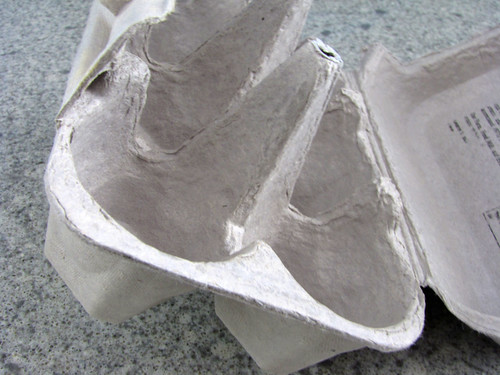
Image by colemama
The design of this ordinary egg carton is ever so interesting with its dips and ridges, crevices and peaks...all contributing to the protective function of the fragile egg! The young minds with whom educators work are also somewhat delicate - susceptible to manipulations from the environment and pressures from peers.
Unlike the mass-produced egg carton's protective function, educators are tasked with facilitating the growth of individual minds in a developmental fashion. The demands for customization are evident and deserved...as are the needs to investigate all sides of the issue (not sure that is happening in TX with its new textbook curriculum policies!). Naples, FL
No comments:
Post a Comment